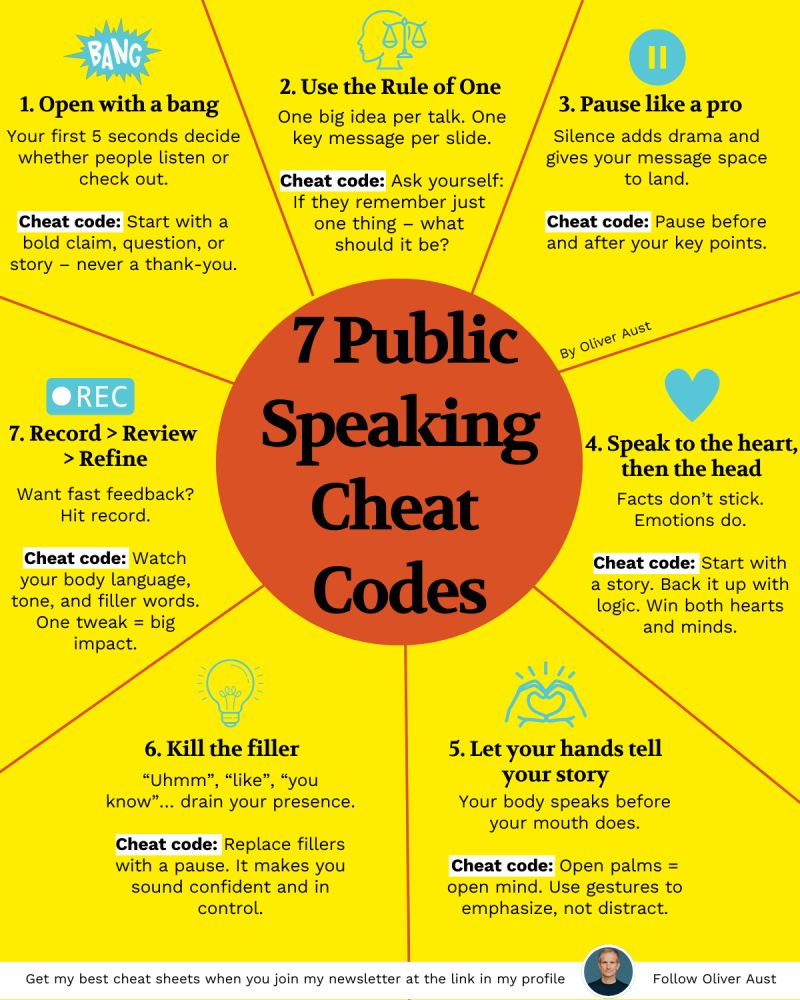#Strategy isn't just a word in a vision statement or a diagram on a slide deck. It is a mindset!
This visual from Mindset LAB captures strategic thinking quite powerfully.
It is a combination of thinking, telling and acting to create real impact.
Here’s how I see these 7 mental powers:
1️⃣ 𝐕𝐢𝐬𝐢𝐨𝐧 𝐰𝐢𝐭𝐡𝐨𝐮𝐭 𝐚 𝐥𝐨𝐧𝐠-𝐭𝐞𝐫𝐦 𝐦𝐢𝐧𝐝𝐬𝐞𝐭 𝐢𝐬 𝐣𝐮𝐬𝐭 𝐚 𝐦𝐨𝐨𝐝𝐛𝐨𝐚𝐫𝐝. Success demands patience. The kind that looks 3–5 years ahead and builds for durability and resilience.
2️⃣ 𝐒𝐭𝐫𝐚𝐭𝐞𝐠𝐲 𝐰𝐢𝐭𝐡𝐨𝐮𝐭 𝐬𝐞𝐜𝐨𝐧𝐝-𝐨𝐫𝐝𝐞𝐫 𝐭𝐡𝐢𝐧𝐤𝐢𝐧𝐠 𝐢𝐬 𝐣𝐮𝐬𝐭 𝐭𝐚𝐜𝐭𝐢𝐜𝐬 𝐢𝐧 𝐝𝐢𝐬𝐠𝐮𝐢𝐬𝐞. The best strategists ask “And then what?” They map trade-offs. They anticipate ripple effects.
3️⃣ 𝐃𝐚𝐭𝐚 𝐰𝐢𝐭𝐡𝐨𝐮𝐭 𝐬𝐲𝐧𝐭𝐡𝐞𝐬𝐢𝐬 𝐢𝐬 𝐧𝐨𝐢𝐬𝐞. We’re drowning in dashboards. But insight lives in the “So what?” It’s the ability to connect dots across silos, stories, and signals and shape a coherent view of the road ahead.
4️⃣ 𝐍𝐚𝐫𝐫𝐚𝐭𝐢𝐯𝐞𝐬 𝐰𝐢𝐭𝐡𝐨𝐮𝐭 𝐜𝐥𝐚𝐫𝐢𝐭𝐲 𝐝𝐨𝐧’𝐭 𝐦𝐨𝐯𝐞 𝐩𝐞𝐨𝐩𝐥𝐞. Storytelling is a strategic tool. It’s how leaders align teams, inspire action, and make complexity feel simple. The best stories don’t just inform. They persuade. They mobilize.
5️⃣ 𝐃𝐞𝐜𝐢𝐬𝐢𝐨𝐧𝐬 𝐰𝐢𝐭𝐡𝐨𝐮𝐭 𝐦𝐞𝐧𝐭𝐚𝐥 𝐦𝐨𝐝𝐞𝐥𝐬 𝐚𝐫𝐞 𝐯𝐮𝐥𝐧𝐞𝐫𝐚𝐛𝐥𝐞 𝐭𝐨 𝐛𝐢𝐚𝐬. Great leaders use logic, not just instinct. They lean on models that reduce noise and sharpen judgment.
6️⃣ 𝐄𝐟𝐟𝐨𝐫𝐭 𝐰𝐢𝐭𝐡𝐨𝐮𝐭 𝐥𝐞𝐯𝐞𝐫𝐚𝐠𝐞 𝐢𝐬 𝐚 𝐭𝐫𝐚𝐩.
Force multipliers are how impact scales. Tools, people, systems... don't see them as resources but as amplifiers.
7️⃣ 𝐏𝐫𝐨𝐛𝐥𝐞𝐦 𝐬𝐨𝐥𝐯𝐢𝐧𝐠 𝐰𝐢𝐭𝐡𝐨𝐮𝐭 𝐫𝐞𝐟𝐫𝐚𝐦𝐢𝐧𝐠 𝐢𝐬 𝐣𝐮𝐬𝐭 𝐟𝐢𝐫𝐞𝐟𝐢𝐠𝐡𝐭𝐢𝐧𝐠. Vague issues become solvable when reframed into specific questions. Root cause thinking isn’t just a technique. It’s a discipline that helps in creating real value.
All of this matters across brand strategy, team building, and leadership development.
If you’re mentoring emerging talent, building a movement, or shaping a brand, this framework is worth sitting with.
Because strategic thinking is not a single skill. It’s a constellation of mental powers, each one sharpening the next.
This visual from Mindset LAB captures strategic thinking quite powerfully.
It is a combination of thinking, telling and acting to create real impact.
Here’s how I see these 7 mental powers:
1️⃣ 𝐕𝐢𝐬𝐢𝐨𝐧 𝐰𝐢𝐭𝐡𝐨𝐮𝐭 𝐚 𝐥𝐨𝐧𝐠-𝐭𝐞𝐫𝐦 𝐦𝐢𝐧𝐝𝐬𝐞𝐭 𝐢𝐬 𝐣𝐮𝐬𝐭 𝐚 𝐦𝐨𝐨𝐝𝐛𝐨𝐚𝐫𝐝. Success demands patience. The kind that looks 3–5 years ahead and builds for durability and resilience.
2️⃣ 𝐒𝐭𝐫𝐚𝐭𝐞𝐠𝐲 𝐰𝐢𝐭𝐡𝐨𝐮𝐭 𝐬𝐞𝐜𝐨𝐧𝐝-𝐨𝐫𝐝𝐞𝐫 𝐭𝐡𝐢𝐧𝐤𝐢𝐧𝐠 𝐢𝐬 𝐣𝐮𝐬𝐭 𝐭𝐚𝐜𝐭𝐢𝐜𝐬 𝐢𝐧 𝐝𝐢𝐬𝐠𝐮𝐢𝐬𝐞. The best strategists ask “And then what?” They map trade-offs. They anticipate ripple effects.
3️⃣ 𝐃𝐚𝐭𝐚 𝐰𝐢𝐭𝐡𝐨𝐮𝐭 𝐬𝐲𝐧𝐭𝐡𝐞𝐬𝐢𝐬 𝐢𝐬 𝐧𝐨𝐢𝐬𝐞. We’re drowning in dashboards. But insight lives in the “So what?” It’s the ability to connect dots across silos, stories, and signals and shape a coherent view of the road ahead.
4️⃣ 𝐍𝐚𝐫𝐫𝐚𝐭𝐢𝐯𝐞𝐬 𝐰𝐢𝐭𝐡𝐨𝐮𝐭 𝐜𝐥𝐚𝐫𝐢𝐭𝐲 𝐝𝐨𝐧’𝐭 𝐦𝐨𝐯𝐞 𝐩𝐞𝐨𝐩𝐥𝐞. Storytelling is a strategic tool. It’s how leaders align teams, inspire action, and make complexity feel simple. The best stories don’t just inform. They persuade. They mobilize.
5️⃣ 𝐃𝐞𝐜𝐢𝐬𝐢𝐨𝐧𝐬 𝐰𝐢𝐭𝐡𝐨𝐮𝐭 𝐦𝐞𝐧𝐭𝐚𝐥 𝐦𝐨𝐝𝐞𝐥𝐬 𝐚𝐫𝐞 𝐯𝐮𝐥𝐧𝐞𝐫𝐚𝐛𝐥𝐞 𝐭𝐨 𝐛𝐢𝐚𝐬. Great leaders use logic, not just instinct. They lean on models that reduce noise and sharpen judgment.
6️⃣ 𝐄𝐟𝐟𝐨𝐫𝐭 𝐰𝐢𝐭𝐡𝐨𝐮𝐭 𝐥𝐞𝐯𝐞𝐫𝐚𝐠𝐞 𝐢𝐬 𝐚 𝐭𝐫𝐚𝐩.
Force multipliers are how impact scales. Tools, people, systems... don't see them as resources but as amplifiers.
7️⃣ 𝐏𝐫𝐨𝐛𝐥𝐞𝐦 𝐬𝐨𝐥𝐯𝐢𝐧𝐠 𝐰𝐢𝐭𝐡𝐨𝐮𝐭 𝐫𝐞𝐟𝐫𝐚𝐦𝐢𝐧𝐠 𝐢𝐬 𝐣𝐮𝐬𝐭 𝐟𝐢𝐫𝐞𝐟𝐢𝐠𝐡𝐭𝐢𝐧𝐠. Vague issues become solvable when reframed into specific questions. Root cause thinking isn’t just a technique. It’s a discipline that helps in creating real value.
All of this matters across brand strategy, team building, and leadership development.
If you’re mentoring emerging talent, building a movement, or shaping a brand, this framework is worth sitting with.
Because strategic thinking is not a single skill. It’s a constellation of mental powers, each one sharpening the next.
#Strategy isn't just a word in a vision statement or a diagram on a slide deck. It is a mindset!
This 👇 visual from Mindset LAB captures strategic thinking quite powerfully.
It is a combination of thinking, telling and acting to create real impact.
Here’s how I see these 7 mental powers:
1️⃣ 𝐕𝐢𝐬𝐢𝐨𝐧 𝐰𝐢𝐭𝐡𝐨𝐮𝐭 𝐚 𝐥𝐨𝐧𝐠-𝐭𝐞𝐫𝐦 𝐦𝐢𝐧𝐝𝐬𝐞𝐭 𝐢𝐬 𝐣𝐮𝐬𝐭 𝐚 𝐦𝐨𝐨𝐝𝐛𝐨𝐚𝐫𝐝. Success demands patience. The kind that looks 3–5 years ahead and builds for durability and resilience.
2️⃣ 𝐒𝐭𝐫𝐚𝐭𝐞𝐠𝐲 𝐰𝐢𝐭𝐡𝐨𝐮𝐭 𝐬𝐞𝐜𝐨𝐧𝐝-𝐨𝐫𝐝𝐞𝐫 𝐭𝐡𝐢𝐧𝐤𝐢𝐧𝐠 𝐢𝐬 𝐣𝐮𝐬𝐭 𝐭𝐚𝐜𝐭𝐢𝐜𝐬 𝐢𝐧 𝐝𝐢𝐬𝐠𝐮𝐢𝐬𝐞. The best strategists ask “And then what?” They map trade-offs. They anticipate ripple effects.
3️⃣ 𝐃𝐚𝐭𝐚 𝐰𝐢𝐭𝐡𝐨𝐮𝐭 𝐬𝐲𝐧𝐭𝐡𝐞𝐬𝐢𝐬 𝐢𝐬 𝐧𝐨𝐢𝐬𝐞. We’re drowning in dashboards. But insight lives in the “So what?” It’s the ability to connect dots across silos, stories, and signals and shape a coherent view of the road ahead.
4️⃣ 𝐍𝐚𝐫𝐫𝐚𝐭𝐢𝐯𝐞𝐬 𝐰𝐢𝐭𝐡𝐨𝐮𝐭 𝐜𝐥𝐚𝐫𝐢𝐭𝐲 𝐝𝐨𝐧’𝐭 𝐦𝐨𝐯𝐞 𝐩𝐞𝐨𝐩𝐥𝐞. Storytelling is a strategic tool. It’s how leaders align teams, inspire action, and make complexity feel simple. The best stories don’t just inform. They persuade. They mobilize.
5️⃣ 𝐃𝐞𝐜𝐢𝐬𝐢𝐨𝐧𝐬 𝐰𝐢𝐭𝐡𝐨𝐮𝐭 𝐦𝐞𝐧𝐭𝐚𝐥 𝐦𝐨𝐝𝐞𝐥𝐬 𝐚𝐫𝐞 𝐯𝐮𝐥𝐧𝐞𝐫𝐚𝐛𝐥𝐞 𝐭𝐨 𝐛𝐢𝐚𝐬. Great leaders use logic, not just instinct. They lean on models that reduce noise and sharpen judgment.
6️⃣ 𝐄𝐟𝐟𝐨𝐫𝐭 𝐰𝐢𝐭𝐡𝐨𝐮𝐭 𝐥𝐞𝐯𝐞𝐫𝐚𝐠𝐞 𝐢𝐬 𝐚 𝐭𝐫𝐚𝐩.
Force multipliers are how impact scales. Tools, people, systems... don't see them as resources but as amplifiers.
7️⃣ 𝐏𝐫𝐨𝐛𝐥𝐞𝐦 𝐬𝐨𝐥𝐯𝐢𝐧𝐠 𝐰𝐢𝐭𝐡𝐨𝐮𝐭 𝐫𝐞𝐟𝐫𝐚𝐦𝐢𝐧𝐠 𝐢𝐬 𝐣𝐮𝐬𝐭 𝐟𝐢𝐫𝐞𝐟𝐢𝐠𝐡𝐭𝐢𝐧𝐠. Vague issues become solvable when reframed into specific questions. Root cause thinking isn’t just a technique. It’s a discipline that helps in creating real value.
All of this matters across brand strategy, team building, and leadership development.
If you’re mentoring emerging talent, building a movement, or shaping a brand, this framework is worth sitting with.
Because strategic thinking is not a single skill. It’s a constellation of mental powers, each one sharpening the next.
0 Комментарии
0 Поделились
967 Просмотры
0 предпросмотр






